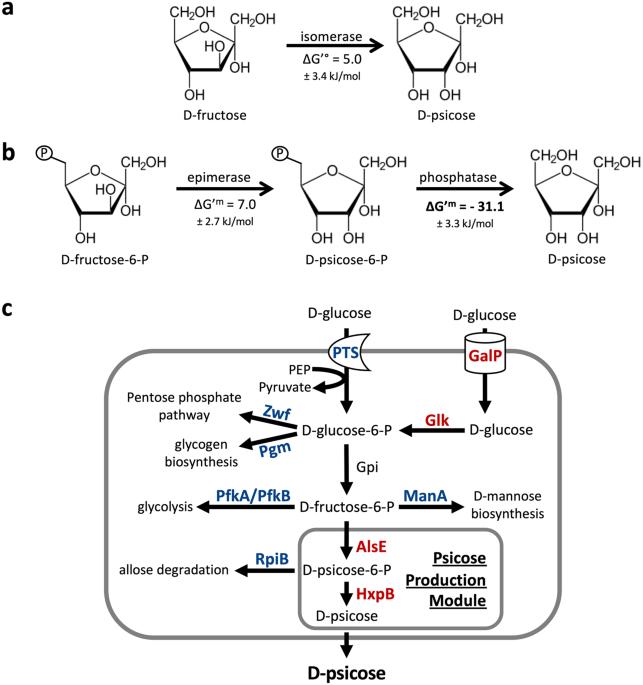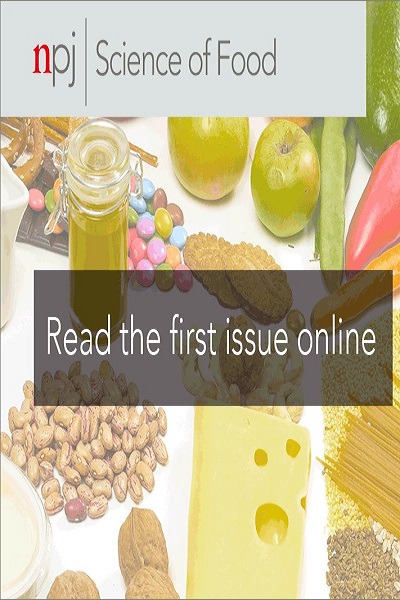唤醒大肠杆菌产生灵菌素的天然能力。
IF 6.3
1区 农林科学
Q1 FOOD SCIENCE & TECHNOLOGY
引用次数: 0
摘要
由于肥胖和糖尿病的急剧增加,消费者正在拼命寻找减少糖摄入量的方法,但到目前为止,还没有既可获得又不牺牲适口性的选择。D-蔗糖是食品系统中最有前途的非营养性糖替代品之一,具有近乎完美的适口性。D-蔗糖目前是使用D-果糖的体外酶促异构化来生产的,导致产率和纯度低,因此需要大量的下游加工才能获得高纯度产品。这使得D-蔗糖在产品中的应用受到限制,并导致单位成本显著提高,从而降低了最需要的人的可及性。在这里,我们发现大肠杆菌本身具有一条热力学上有利的途径,通过一系列磷酸化-差向异构化-去磷酸化步骤从D-葡萄糖产生D-蔗糖。为了增加D-蔗糖生产的碳流量,我们对途径酶、中心碳代谢和竞争代谢途径进行了一系列基因修饰。为了最大限度地提高细胞活力和D-蔗糖的产生,我们实施了关键基因的动态调控方法,包括聚集的规则间隔短回文重复序列抑制(CRISPRi)和固定相启动子。工程菌株实现了D-葡萄糖的完全消耗和D-蔗糖的生产,滴度为15.3 g L-1,生产率为2 g L-1h-1,在试管条件下产率为62%。这些结果证明了全细胞催化作为体外酶合成的可持续替代品的可行性,可用于生产D-蔗糖。本文章由计算机程序翻译,如有差异,请以英文原文为准。

Awakening the natural capability of psicose production in Escherichia coli
Due to the rampant rise in obesity and diabetes, consumers are desperately seeking for ways to reduce their sugar intake, but to date there are no options that are both accessible and without sacrifice of palatability. One of the most promising new ingredients in the food system as a non-nutritive sugar substitute with near perfect palatability is D-psicose. D-psicose is currently produced using an in vitro enzymatic isomerization of D-fructose, resulting in low yield and purity, and therefore requiring substantial downstream processing to obtain a high purity product. This has made adoption of D-psicose into products limited and results in significantly higher per unit costs, reducing accessibility to those most in need. Here, we found that Escherichia coli natively possesses a thermodynamically favorable pathway to produce D-psicose from D-glucose through a series of phosphorylation-epimerization-dephosphorylation steps. To increase carbon flux towards D-psicose production, we introduced a series of genetic modifications to pathway enzymes, central carbon metabolism, and competing metabolic pathways. In an attempt to maximize both cellular viability and D-psicose production, we implemented methods for the dynamic regulation of key genes including clustered regularly interspaced short palindromic repeats inhibition (CRISPRi) and stationary-phase promoters. The engineered strains achieved complete consumption of D-glucose and production of D-psicose, at a titer of 15.3 g L-1, productivity of 2 g L-1 h-1, and yield of 62% under test tube conditions. These results demonstrate the viability of whole-cell catalysis as a sustainable alternative to in vitro enzymatic synthesis for the accessible production of D-psicose.
求助全文
通过发布文献求助,成功后即可免费获取论文全文。
去求助
来源期刊

NPJ Science of Food
FOOD SCIENCE & TECHNOLOGY-
CiteScore
7.50
自引率
1.60%
发文量
53
期刊介绍:
npj Science of Food is an online-only and open access journal publishes high-quality, high-impact papers related to food safety, security, integrated production, processing and packaging, the changes and interactions of food components, and the influence on health and wellness properties of food. The journal will support fundamental studies that advance the science of food beyond the classic focus on processing, thereby addressing basic inquiries around food from the public and industry. It will also support research that might result in innovation of technologies and products that are public-friendly while promoting the United Nations sustainable development goals.
 求助内容:
求助内容: 应助结果提醒方式:
应助结果提醒方式:


